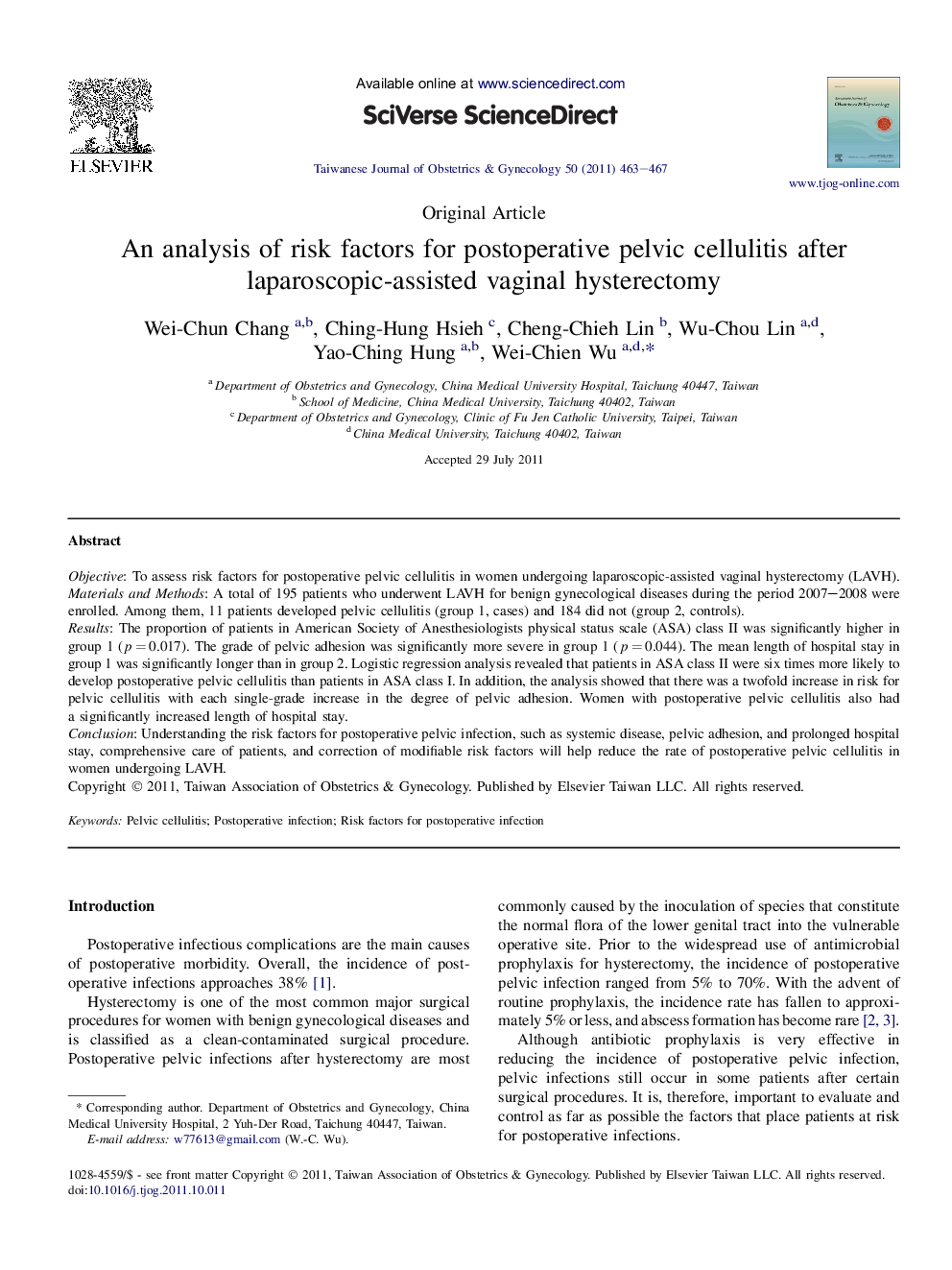| Article ID | Journal | Published Year | Pages | File Type |
|---|---|---|---|---|
| 3975540 | Taiwanese Journal of Obstetrics and Gynecology | 2011 | 5 Pages |
ObjectiveTo assess risk factors for postoperative pelvic cellulitis in women undergoing laparoscopic-assisted vaginal hysterectomy (LAVH).Materials and MethodsA total of 195 patients who underwent LAVH for benign gynecological diseases during the period 2007–2008 were enrolled. Among them, 11 patients developed pelvic cellulitis (group 1, cases) and 184 did not (group 2, controls).ResultsThe proportion of patients in American Society of Anesthesiologists physical status scale (ASA) class II was significantly higher in group 1 (p = 0.017). The grade of pelvic adhesion was significantly more severe in group 1 (p = 0.044). The mean length of hospital stay in group 1 was significantly longer than in group 2. Logistic regression analysis revealed that patients in ASA class II were six times more likely to develop postoperative pelvic cellulitis than patients in ASA class I. In addition, the analysis showed that there was a twofold increase in risk for pelvic cellulitis with each single-grade increase in the degree of pelvic adhesion. Women with postoperative pelvic cellulitis also had a significantly increased length of hospital stay.ConclusionUnderstanding the risk factors for postoperative pelvic infection, such as systemic disease, pelvic adhesion, and prolonged hospital stay, comprehensive care of patients, and correction of modifiable risk factors will help reduce the rate of postoperative pelvic cellulitis in women undergoing LAVH.
